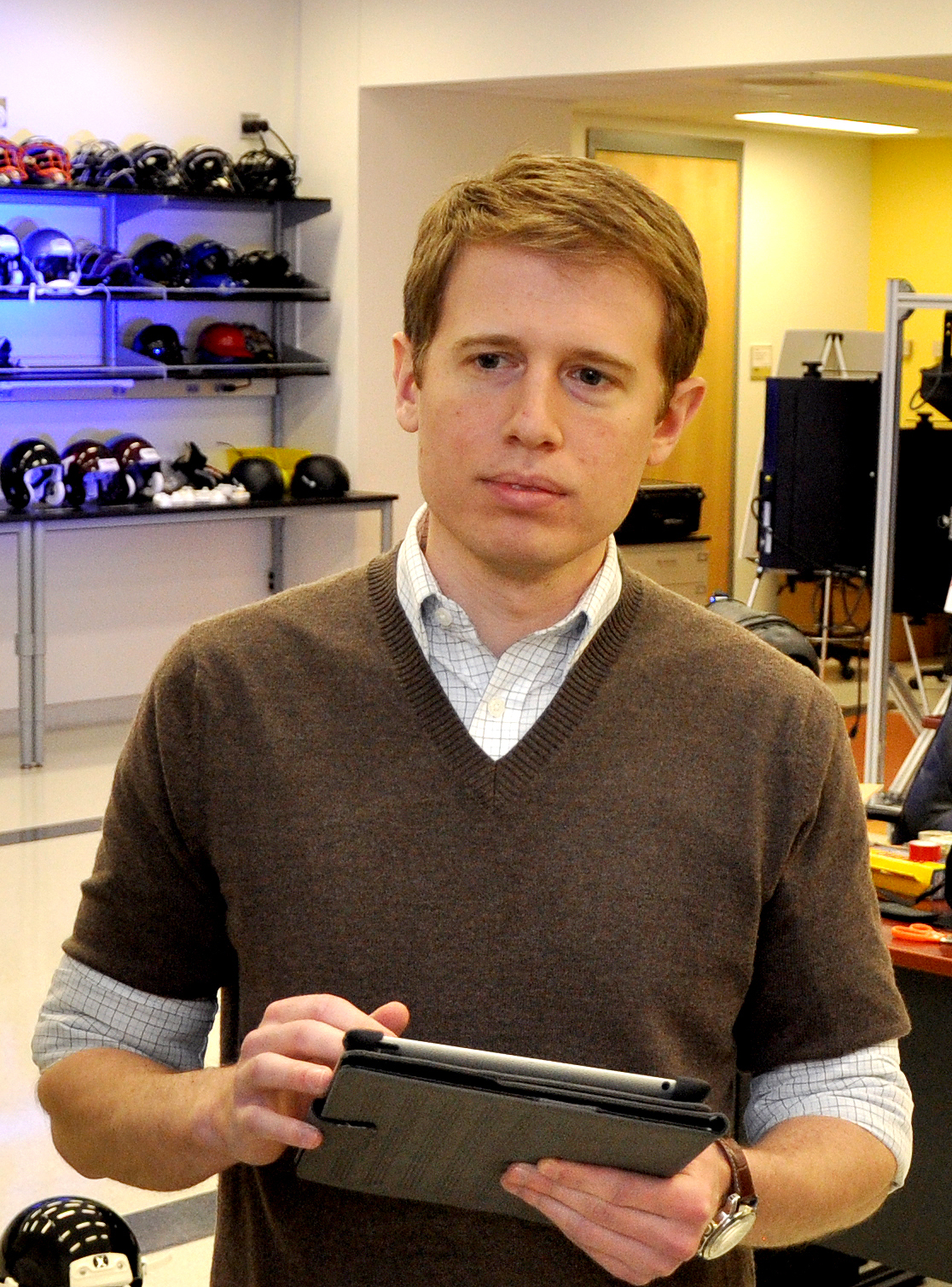Study shows limiting contact in practice cuts exposure to head hits and injuries

Less contact during practice could mean a lot less exposure to head injuries for young football players, according to researchers at Virginia Tech and Wake Forest Baptist Medical Center.
Their study of 50 youth-league players ages 9 to 12 – the largest ever conducted to measure the effects of head impacts in youth football – found that contact in practice, not games, was the most significant variable when the number and force of head hits incurred over the course of a season were measured. Numerous studies in this area have been done on high school and college players, but those findings do not necessarily apply to younger players.
Though more than 70 percent of the football players in the United States are under age 14, there is no clear, scientifically based understanding of the effect of repeated blows to the head in young players, said Steven Rowson, assistant professor at the Virginia Tech-Wake Forest University School of Biomedical Engineering and Sciences and lead author of the study, which has been published in the current online edition of the Annals of Biomedical Engineering and Sciences.
To quantify youth football players’ exposure to head impacts in practices and games during the course of a single season, the researchers employed sensors in the helmets of 50 players on three teams in two different leagues.
The sensors were installed on an elastic base inside the helmet so that they remained in contact with the head throughout the duration of head impact, allowing for measurement of head acceleration rather than that of the helmet. Data from the sensors were wirelessly transmitted to a computer on the sideline and processed to measure both the linear and rotational head acceleration caused by each impact. All data were analyzed on an individual player basis and then averaged to represent the exposure level of a typical 9 to12-year-old football player.
The most important finding was that substantial differences existed among the three teams for both frequency and intensity of the impacts, Rowson said. For the entire season, players on team A experienced an average of 37 percent to 46 percent fewer impacts than players on teams B and C. For example, the average player on team A experienced 158 impacts during the season, compared to 294 and 251 on the other two teams.
This can be attributed to several factors, but the primary reason was that team A had fewer practices during the season than teams B and C, the study showed. During games, impact frequency and acceleration magnitudes were not significantly different among the teams. (Note: B-roll of the study participants is available online.)
In addition, team A competed in a league that had implemented Pop Warner rule changes, including a limit on contact during practice sessions. Teams B and C had no such restrictions.
Although the practice contacts were limited, there were no differences in the head acceleration magnitudes measured in the games between all three teams. The 95 percent head accelerations ranged from 41 g to 45 g -- with “g” meaning times the force of gravity -- for all three teams and were not significantly different. These data show that limiting contact in practices does not create an adverse effect in games.
“It is striking that you can cut head impacts for a player in half just by modifying practice, and it does not seem to change the game,” said Dr. Alexander Powers, assistant professor of neurosurgery at Wake Forest Baptist and co-author of the study. “This may be very important in kids where brains are developing.”
Coaching style also had a major influence on factors such as the types of drills used in practice and the plays called in games, which would likely contribute to the differences in the head impact exposure that players experienced, the authors reported.
“We hope that the findings will help improve the safety of youth football through rule changes to limit contact in practices, coach training and equipment design, especially in developing youth-specific helmets to better reduce accelerations from head impacts,” said Rowson, who graduated with master’s and doctorate degrees from Virginia Tech in, respectively, 2008 and 2011.
Funding for the study was provided by the Childress Institute for Pediatric Trauma, the National Highway Traffic Safety Administration, and the Virginia Tech-Wake Forest University School of Biomedical Engineering and Sciences.
Co-authors are: Dr. Joseph Maldjian, and Dr. Christopher Whitlow, both professors of radiology, Wake Forest School of Medicine; Dr. Christopher Alexander Powers, professor of neurosurgery, Wake Forest School of Medicine; Joel Stitzel, Stefan Duma, and Steven Rowson, all of the Virginia Tech – Wake Forest University School of Biomedical Engineering and Sciences. Three students also co-authored the paper: Bryan Cobb of Blacksburg, Va., a master’s student in biomedical engineering, and Jillian Urban and Elizabeth Davenport, both of Winston-Salem, N.C., and studying at Wake Forest Baptist.




